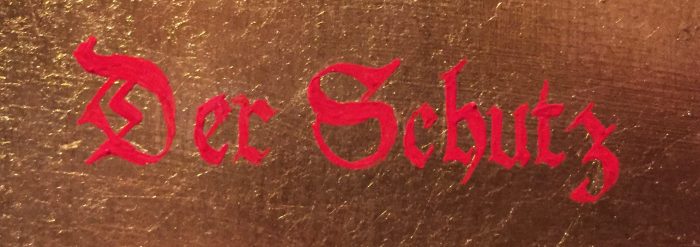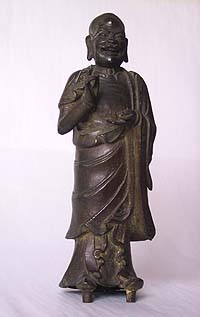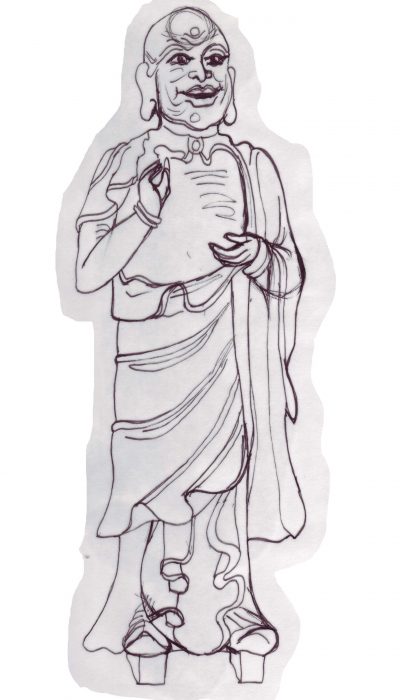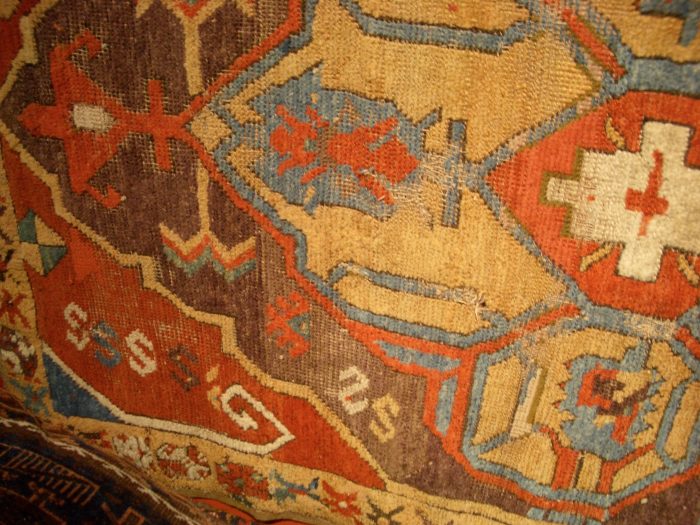Freud’s Chinese Guardian
This painting of a Chinese Guardian statue is one of my twelve smaller gilded paintings which together form Significantly Freud: Icons for a Jewish Atheist, representing my favourite twelve artefacts from the private collection of Sigmund Freud.
Jonathan Jones (Guardian 9 May 2006) writes that “whenever Freud sat down to write he was confronted by statues covering his desk. … At the centre of it all is the huge desk – covered with ancient sculptures – and a chair designed in a surreal shape for Sigmund Freud’s comfort. The leather is worn and darkened by prolonged contact with the back and buttocks that supported the most controversial mind of the 20th century. The chair faces the room’s most famous artefact – the consulting couch, over which is laid a rug with a repetitive pattern, perfect for inducing calm reverie. It is a seductive room, Freud’s study: it almost paralyses you with a desire to lie down and free associate.”

Der Shutz (Protection)
The red script Der Shutz translates as “Protection”. For me, this signifies Freud’s deep need for a hero, a father figure he could respect and a need to be surrounded by a group of men who admired him.

Freud’s original bronze statue of a Chinese Guardian from the Ming Dynasty in China is 280 mm high. This charming artefact is also known as the Smiling Priest. Freud’s passion for collecting artefacts from archaeological digs was thought to mirror his passion for delving into the human mind.

One of my original sketches for this painting.
“Freud’s collection is truly staggering. He acquired hundreds of antiquities, including fragments of Roman fresco paintings, a Roman portrait sculpture and several parts of mummy cases. The cultural legacy of Egypt, Greece and Rome filled his waking hours; no wonder it filled his sleeping ones, too.” (Jonathan Jones, The Secret Sigmund, The Guardian, 9 May 2006)

The colour of the frame and desktop in this painting was inspired by the yellow ochre colour in part of the geometric rug hanging on the wall beside the couch where each patient could sit.